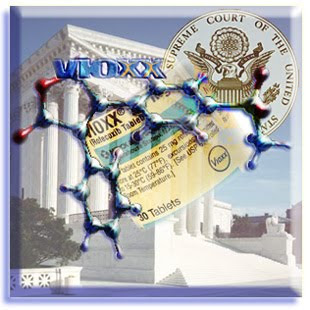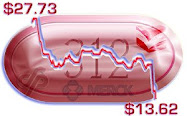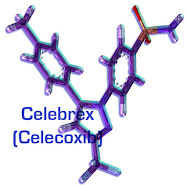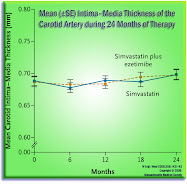 Yesterday, I answered some questions on another chat-board about the Old Schering-Plough, now "New" Merck 6% Convertible Preferred issue, and how it is affected by the reverse merger. Given that tomorrow is the last day to make this election, I though I'd re-print some of those observations, slightly massaged, here.
Yesterday, I answered some questions on another chat-board about the Old Schering-Plough, now "New" Merck 6% Convertible Preferred issue, and how it is affected by the reverse merger. Given that tomorrow is the last day to make this election, I though I'd re-print some of those observations, slightly massaged, here.
[Editor's aside: Almost by dint of capital markets dark-magic, tonight, the Preferred closed at $250.90. Astute readers will recall that the preferred was originally-issued in connection with the financing of the acquisition of Organon by Schering-Plough, in August of 2008, at. . . Yep! $250 per preferred unit (imagine that!), and bearing a 6% annual coupon, or $15 per year, paid in quarterly chunks.]
Okay -- putting aside my mutterings about the uncanny symmetry of tonight's closing price -- and tomorrow's expected "Make Whole conversion" events -- here are some more-general caveats.
First, and most importantly, these observations were made for an investor who is decidedly-bullish on New Merck's prospects, in the near and mid-term. Second, this particular investor is not sitting on an (unrealized) capital loss in the Preferred 6% issue. Next, he asked me to ignore taxes. Finally, he had no near-term liquidity event that he needed to fund (however, in this regard, the running 6% dividend pay-out on the preferred is rather tempting -- but one can only collect that higher dividend if one doesn't choose the "Make-Whole Call"). On the other hand, choosing the Make Whole call puts $86.12 of cash into one's account, for every Preferred 6% Unit turned in -- so, cash available in either scenario.
So now, if you, too, are bullish on New Merck (even with it sitting at a new 52 week high), and want to get more common shares of the company in your hands as soon as you can, here is the conversion math, for tomorrow:
. . . .From the completion of the merger [on Nov. 3, 2009] through 5:00 p.m. ET on November 19, 2009, the 6.00% Mandatory Convertible Preferred Stock of Schering-Plough will be convertible at a make-whole conversion rate of 8.2021. For each share of preferred stock converted during this period, the holder will receive $86.12 in cash ($10.50 x 8.2021) and 4.7302 “MRK” common shares (0.5767x 8.2021). Holders will also receive, for each share converted, a dividend make-whole payment of between $10.79 and $10.82, depending on the date of conversion. . . .
Again, I am ignoring taxes, as I suggested at the outset -- though it seems a shame to pay taxes on April 15, 2010, on all that cash (albeit at capital gains rates).
If you wait beyond the 19th, your conversion ratio will
yield a smaller number of Merck common shares,
unless New Merck common stock prices on the NYSE dip significantly from here. Under the post-November 19, 2009 conversion mechanics, a persistent decrease in the NYSE price of New Meck common will cause an
upward adjustment in the conversion ratio. But if the NYSE prices are stable or rising, between November 20, 2009 and August 13, 2010, here is what happens:
. . . .Conversion After the Make-Whole Acquisition Conversion Period
 If a holder does not elect to convert shares of Preferred Stock during the Make-Whole Acquisition Conversion Period, the holder’s shares will remain outstanding and subject to automatic conversion into Cash Consideration and Share Consideration on the mandatory conversion date of August 13, 2010 (the “Mandatory Conversion Date”), or may be converted into Cash Consideration and Share Consideration, in whole or in part, at the option of the holder at any time prior to the Mandatory Conversion Date.
If a holder does not elect to convert shares of Preferred Stock during the Make-Whole Acquisition Conversion Period, the holder’s shares will remain outstanding and subject to automatic conversion into Cash Consideration and Share Consideration on the mandatory conversion date of August 13, 2010 (the “Mandatory Conversion Date”), or may be converted into Cash Consideration and Share Consideration, in whole or in part, at the option of the holder at any time prior to the Mandatory Conversion Date.
Each share of Preferred Stock that is converted into Cash Consideration and Share Consideration at the option of the holder at any time after the Make-Whole Acquisition Conversion Period and prior to the Mandatory Conversion Date will be converted into Cash Consideration, based on a fixed “Minimum Cash Conversion Rate” of 7.4206 that will not be subject to “anti-dilution adjustments,” and Share Consideration, based on a “Minimum Share Conversion Rate” that will initially be 7.4206, but will be subject to “anti-dilution adjustments” as described below.
Accordingly, for each share of Preferred Stock so converted, the holder will receive:
Δ $77.9163 in cash ($10.50 multiplied by the Minimum Cash Conversion Rate of 7.4206); and
Δ a number of shares of New Merck Common Stock equal to 0.5767 multiplied by the Minimum Share Conversion Rate then in effect. . . .
As you can readily see, the conversion ratios are lower (again, assuming that New Merck common holds most of its value, through August 2010).
If New Merck common stock dips significantly before the August 2010 forced convert date, the conversion ratio will rise modestly -- but given a bullish view of Merck, it would seem imprudent, from that perspective, to pass-up tomorrow's Make Whole Call, and sit idly by (but collecting the 6% dividend, paid in quarterly installments), waiting for a big Merck downturn, all in the hopes of getting more shares -- especially when you can have the certainty of "
more shares" now, simply by exercising your "Make-Whole Call" rights, before tomorrow evening, at 5 PM EST.
The mundane mechanical
steps for doing that, tomorrow may be found in the middle of the third page of this New Merck PDF file.
In sum, then -- assuming that New Merck common stock doesn't dip significantly, between now and August 2010, you'll get more cash, and more New Merck common shares, if you convert by tomorrow night (you cannot hold the preferred forever, it is a forced convert in August of 2010), thus:
4.28 shares (after Nov. 19, 2009) v. 4.73 (before Nov. 19, 2009) shares.
Of course, you'll forego the $15 annual (6% nominal) dividend -- as you'll be holding New Merck common shares, not the
higher-yielding preferred.
 Well, the questioning doesn't exactly tie Merck's position in settling the products liability claims for $4.85 billion, to the notion that Merck expects more of securities plaintiffs (as to "storm warnings") than it does of itself, as to safety -- but the embers of my earlier post do appear in the Justices' flames, as reported by The Wall Street Journal tonight:
Well, the questioning doesn't exactly tie Merck's position in settling the products liability claims for $4.85 billion, to the notion that Merck expects more of securities plaintiffs (as to "storm warnings") than it does of itself, as to safety -- but the embers of my earlier post do appear in the Justices' flames, as reported by The Wall Street Journal tonight:















































